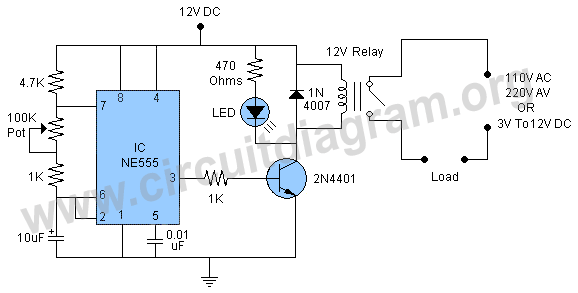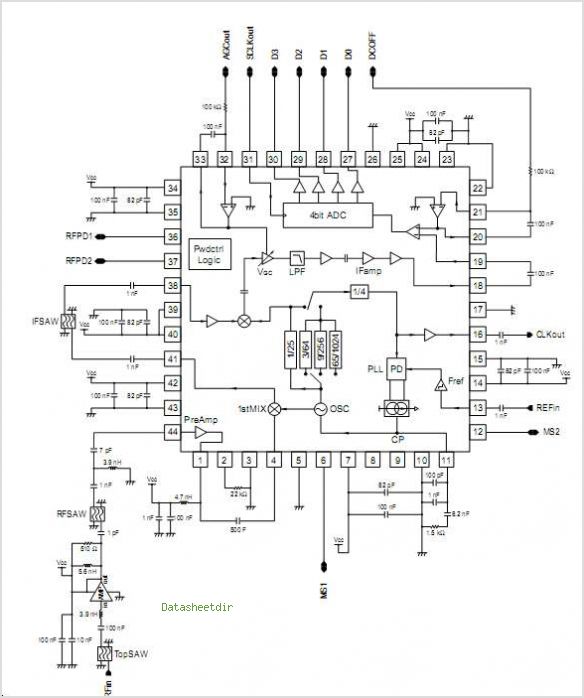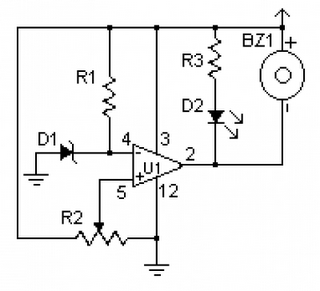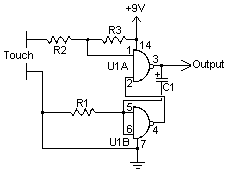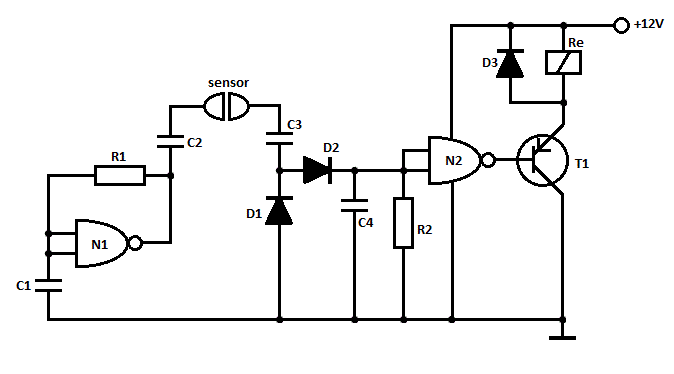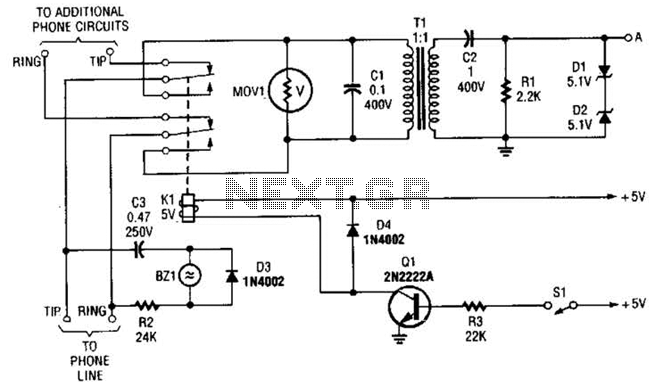
Voltage Doubler Circuit
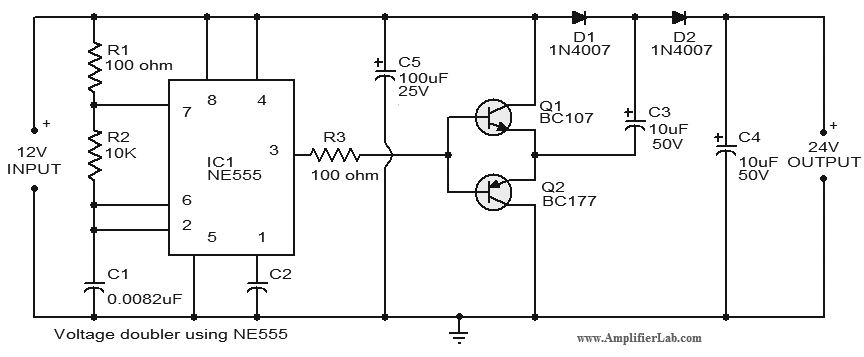
Project Manager Jim Heck, G3WGM, has provided an exclusive audio interview to Bob McCreadie, G0FGX, from TX Factor, detailing the tests and potential issues involved. Membership in AMSAT-UK is available to anyone interested in amateur radio satellites or space activities, including the International Space Station (ISS). E-members of AMSAT-UK can conveniently download OSCAR News in PDF format, accessible on laptops, tablets, or smartphones at any time and place. The MO-76 $50sat amateur radio satellite team is proud to announce that the PICAXE-based $50sat was selected as Project of the Month by Bath-based Revolution Education, which supplies PICAXE microcontroller development systems. The $50SAT is among the smallest amateur radio satellites ever launched, measuring 5x5x7.5 cm and weighing only 210 grams. Its transmitter power is 100 mW on 437.505 MHz (+/-9 kHz Doppler shift) using FM CW/RTTY. The satellite employs the low-cost Hope RFM22B single-chip radio and the PICAXE 40X2 processor. The $50SAT project was a collaborative educational effort involving Professor Bob Twiggs, KE6QMD, from Morehead State University, alongside three other amateur radio operators: Howie DeFelice, AB2S, Michael Kirkhart, KD8QBA, and Stuart Robinson, GW7HPW. INVADER is an amateur radio art satellite developed by students at Tama Art University as part of the ARTSAT: Art and Satellite Project, which aims to utilize a satellite for art and design purposes. The 1U CubeSat was launched from the Yoshinobu Launch Complex at the Tanegashima Space Center on February 27 at 1837 UT. It carries a CW (A1A) beacon on 437.325 MHz (+/- 10 kHz Doppler shift), a 1200 bps FM AX.25 Packet Radio, FM Digitalker on 437.200 MHz, and a low-resolution camera. A notable occurrence took place on April 3, when both AO-7 and FUNcube-1 AO-73 amateur radio satellites had coinciding passes over the UK. AO-7 was launched on November 15, 1974, and FUNcube-1 AO-73 on November 21, 2013. Simultaneous downlinks from both satellites were clearly received on 2m via the Southampton University Wireless Society (SUWS) online WebSDR, which is accessible worldwide. The performance of the system has significantly improved due to the installation of new helical antennas designed by Martin Ehrenfried, G8JNJ, pre-amplifiers by Noel Matthews, G8GTZ, and a new PC build by Phil Crump, M0DNY. The FUNcube-1 AO-73 BPSK telemetry beacon on 145.935 MHz is now 20 dB above the receiver noise floor, with several stations using SSB, including Martin, G8JNJ, clearly audible on the 2m downlink during recent transponder tests. Further enhancements are planned to improve receive sensitivity and reduce interference on the 2m band. The SUWS WebSDR allows anyone to operate and receive signals from satellites, with users encouraged to leave messages in the chatbox to report their observations. Euroluna, a Danish amateur team, is participating in the $30 million Google Lunar X PRIZE contest to become the first privately funded team to land and operate a rover on the Moon. Their first amateur radio satellite, Romit1, is a 2U CubeSat that will transmit on 437.505 MHz using 1200 bps AX.25 packet radio. It is equipped with an Ion Motor, which, if successful, will enable it to raise its orbit from 310 km to 700 km over the course of a year. UKube-1 carries a set of AMSAT-UK FUNcube boards providing a 435/145 MHz linear transponder and educational telemetry beacon. Clyde Space has confirmed the launch date for June 19, 2014, from Baikonur in Kazakhstan, utilizing a Russian Soyuz-2 rocket. UKube-1 is a 3U CubeSat designed and manufactured by Clyde Space at their advanced facility in the West of Scotland Science Park, Glasgow. This CubeSat is among the most sophisticated of its kind, featuring six independent, advanced payloads. The UKube-1 mission serves as a pilot for a collaborative, national CubeSat program that unites UK industry and academia to quickly and efficiently conduct educational experiments, test new technologies, and carry out space research. The payloads on UKube-1 include: the first GPS device designed to measure plasmaspheric space weather; a camera for Earth imaging and testing the effects of radiation on space hardware, utilizing a new generation of imaging sensors; an experiment to explore the feasibility of using cosmic radiation to enhance the security of communication satellites and to flight test lower-cost electronic systems; an advanced mission interface computer for data processing on small spacecraft; a high-rate S-Band transmitter and patch antenna; and an outreach payload that allows school children to engage with the spacecraft. Additionally, details regarding Facebook's Connectivity Lab's initiatives to develop drones, satellites, and lasers for global internet delivery have been shared. The team includes leading experts in aerospace and communications technology, including members from NASA's Jet Propulsion Lab and Ames Research Center. Key personnel from Ascenta, a UK-based company known for creating early versions of Zephyr, the world's longest-flying solar-powered unmanned aircraft, have joined the team to work on connectivity aircraft. A proposal to repeat a test on March 29 is being considered, extending the duration of the transponder operation. The transponder will be activated during the first UK pass (approximately 10:30 UT) and deactivated during one of the evening passes (the first at approximately 20:00 UT). The team is particularly interested in telemetry data when the satellite exits eclipse, as it is expected to be at its lowest temperature, and reception reports from strategically located stations would be appreciated.Project Manager Jim Heck G3WGM has given an exclusive audio interview to the TX Factor s Bob McCreadie G0FGX which explains what the tests are all about and the potential problems. Membership of AMSAT-UK is open to anyone who has an interest in amateur radio satellites or space activities, including the International Space Station (ISS).
E-members of AMSAT-UK are able to download OSCAR News as a convenient PDF that can be read on laptops, tablets or smartphones anytime, anyplace, anywhere. Join as an E-member at Electronic (PDF) E-membership The MO-76 $50sat amateur radio satellite team is pleased to announce that the PICAXE based $50sat was chosen as Project of the Month by Bath based Revolution Education who supply PICAXE microcontroller development systems.
$50SAT is one of the smallest amateur radio satellites ever launched at 5x5x7. 5 cm and weighs only 210 grams. Transmitter power is just 100 mW on 437. 505 MHz (+/-9 kHz Doppler shift) FM CW/RTTY. It uses the low cost Hope RFM22B single chip radio and PICAXE 40X2 processor. $50SAT was a collaborative education project between Professor Bob Twiggs, KE6QMD, Morehead State University and three other radio amateurs, Howie DeFelice, AB2S, Michael Kirkhart, KD8QBA, and Stuart Robinson, GW7HPW. INVADER is an amateur radio Art Satellite developed by students at the Tama Art University as a part of the ARTSAT: Art and Satellite Project which aims at a practical use of a satellite for art and design.
The 1U CubeSat was launched from the Yoshinobu Launch Complex at the Tanegashima Space Center on Thursday, February 27 at 1837 UT. It carries a CW (A1A) beacon on 437. 325 MHz (+/- 10 kHz Doppler shift), a 1200 bps FM AX. 25 Packet Radio and FM Digitalker on 437. 200 MHz and a low-resolution camera. A very good set of co-incident passes of both the AO-7 and FUNcube-1 AO-73 amateur radio satellites occurred over the UK on the morning of Thursday, April 3.
The two satellites were launched 39 years apart, AO-7 on November 15, 1974 and FUNcube-1 AO-73 on November 21, 2013. Simultaneous downlinks from both satellites could be clearly seen and heard on 2m, via the Southampton University Wireless Society (SUWS) online WebSDR at which is available for use world-wide.
New Helical antennas designed by Martin Ehrenfried, G8JNJ, the installation of pre-amplifiers by Noel Matthews, G8GTZ, and a new PC build by Phil Crump, M0DNY have helped to dramatically improve the overall performance, especially on the 2m and 70cm Amateur bands. The FUNcube-1 AO-73 BPSK telemetry beacon on 145. 935 MHz is now up to 20dB above the receiver noise floor, and several stations using SSB, including Martin, G8JNJ, could be clearly heard on the 2m downlink via the SDR during last weekends transponder tests.
More improvements are in the pipeline, which we hope will help to further improve the receive sensitivity and reduce the level of interfering signals that can be observed on 2m. Anybody can operate the SUWS WebSDR to receive signals from Satellites, and we really appreciate users leaving a message in the chatbox to let us know what they have heard.
Euroluna are a Danish amateur team participating in the $30 million Google Lunar X PRIZE contest to be the first privately funded team to land and drive a rover on the Moon. Their first amateur radio satellite Romit1 is a 2U CubeSat that will transmit on 437. 505 MHz using 1200 bps AX. 25 packet radio. It will be fitted with an Ion Motor and if everything goes well it should, after a year, be able to raise the orbit from 310 km to 700 km.
UKube-1 carries a set of AMSAT-UK FUNcube boards providing a 435/145 MHz linear transponder and educational telemetry beacon. Clyde Space have announced that the launch is now confirmed for June 19, 2014 from the Baikonur in Kazakhstan, where it will be launched on a Russian Soyuz-2 rocket.
UKube-1 is a 3U CubeSat has been designed and manufactured by Clyde Space at their high-tech facility on the West of Scotland Science Park in Glasgow. This CubeSat is one of the most advanced of its kind, the complexity of the spacecraft highlighted by the nature of the 6 independent, advanced payloads being flown by the mission.
The UKube-1 mission is the pilot for a collaborative, national CubeSat programme bringing together UK industry and academia to fly educational packages, test new technologies and carry out new space research quickly and efficiently. Payloads on UKube-1 include: the first GPS device aimed at measuring plasmaspheric space weather; a camera that will take images of the Earth, and test the effect of radiation on space hardware, using a new generation of imaging sensor; an experiment to demonstrate the feasibility of using cosmic radiation to improve the security of communications satellites and to flight test lower cost electronic systems; an advanced mission interface computer to enable serious number crunching on tiny spacecraft; a high rate S-Band transmitter and patch antenna; an outreach payload that allows school children to interact with the spacecraft.
Today, we`re sharing some details of the work Facebook`s Connectivity Lab is doing to build drones, satellites and lasers to deliver the internet to everyone. Our team has many of the world`s leading experts in aerospace and communications technology, including from NASA`s Jet Propulsion Lab and Ames Research Center.
Today we are also bringing on key members of the team from Ascenta, a small UK-based company whose founders created early versions of Zephyr, which became the world`s longest flying solar-powered unmanned aircraft. They will join our team working on connectivity aircraft. In this paper Mark describes the challenges and opportunities of a new generation of connectivity platforms: We are therefore proposing to repeat the test on Saturday, March 29, but leave the transponder on for a longer period.
We will switch it on during the first pass over the UK (approx 10:30 UT) and switch it off during one of the evening passes over UK, the first of which is at approx 20:00 UT. We are particularly interested to receive TLM when the satellite is coming out of eclipse (i. e. when it should be at its coldest temperature). So reception from suitably located stations would be very welcome. 🔗 External reference
E-members of AMSAT-UK are able to download OSCAR News as a convenient PDF that can be read on laptops, tablets or smartphones anytime, anyplace, anywhere. Join as an E-member at Electronic (PDF) E-membership The MO-76 $50sat amateur radio satellite team is pleased to announce that the PICAXE based $50sat was chosen as Project of the Month by Bath based Revolution Education who supply PICAXE microcontroller development systems.
$50SAT is one of the smallest amateur radio satellites ever launched at 5x5x7. 5 cm and weighs only 210 grams. Transmitter power is just 100 mW on 437. 505 MHz (+/-9 kHz Doppler shift) FM CW/RTTY. It uses the low cost Hope RFM22B single chip radio and PICAXE 40X2 processor. $50SAT was a collaborative education project between Professor Bob Twiggs, KE6QMD, Morehead State University and three other radio amateurs, Howie DeFelice, AB2S, Michael Kirkhart, KD8QBA, and Stuart Robinson, GW7HPW. INVADER is an amateur radio Art Satellite developed by students at the Tama Art University as a part of the ARTSAT: Art and Satellite Project which aims at a practical use of a satellite for art and design.
The 1U CubeSat was launched from the Yoshinobu Launch Complex at the Tanegashima Space Center on Thursday, February 27 at 1837 UT. It carries a CW (A1A) beacon on 437. 325 MHz (+/- 10 kHz Doppler shift), a 1200 bps FM AX. 25 Packet Radio and FM Digitalker on 437. 200 MHz and a low-resolution camera. A very good set of co-incident passes of both the AO-7 and FUNcube-1 AO-73 amateur radio satellites occurred over the UK on the morning of Thursday, April 3.
The two satellites were launched 39 years apart, AO-7 on November 15, 1974 and FUNcube-1 AO-73 on November 21, 2013. Simultaneous downlinks from both satellites could be clearly seen and heard on 2m, via the Southampton University Wireless Society (SUWS) online WebSDR at which is available for use world-wide.
New Helical antennas designed by Martin Ehrenfried, G8JNJ, the installation of pre-amplifiers by Noel Matthews, G8GTZ, and a new PC build by Phil Crump, M0DNY have helped to dramatically improve the overall performance, especially on the 2m and 70cm Amateur bands. The FUNcube-1 AO-73 BPSK telemetry beacon on 145. 935 MHz is now up to 20dB above the receiver noise floor, and several stations using SSB, including Martin, G8JNJ, could be clearly heard on the 2m downlink via the SDR during last weekends transponder tests.
More improvements are in the pipeline, which we hope will help to further improve the receive sensitivity and reduce the level of interfering signals that can be observed on 2m. Anybody can operate the SUWS WebSDR to receive signals from Satellites, and we really appreciate users leaving a message in the chatbox to let us know what they have heard.
Euroluna are a Danish amateur team participating in the $30 million Google Lunar X PRIZE contest to be the first privately funded team to land and drive a rover on the Moon. Their first amateur radio satellite Romit1 is a 2U CubeSat that will transmit on 437. 505 MHz using 1200 bps AX. 25 packet radio. It will be fitted with an Ion Motor and if everything goes well it should, after a year, be able to raise the orbit from 310 km to 700 km.
UKube-1 carries a set of AMSAT-UK FUNcube boards providing a 435/145 MHz linear transponder and educational telemetry beacon. Clyde Space have announced that the launch is now confirmed for June 19, 2014 from the Baikonur in Kazakhstan, where it will be launched on a Russian Soyuz-2 rocket.
UKube-1 is a 3U CubeSat has been designed and manufactured by Clyde Space at their high-tech facility on the West of Scotland Science Park in Glasgow. This CubeSat is one of the most advanced of its kind, the complexity of the spacecraft highlighted by the nature of the 6 independent, advanced payloads being flown by the mission.
The UKube-1 mission is the pilot for a collaborative, national CubeSat programme bringing together UK industry and academia to fly educational packages, test new technologies and carry out new space research quickly and efficiently. Payloads on UKube-1 include: the first GPS device aimed at measuring plasmaspheric space weather; a camera that will take images of the Earth, and test the effect of radiation on space hardware, using a new generation of imaging sensor; an experiment to demonstrate the feasibility of using cosmic radiation to improve the security of communications satellites and to flight test lower cost electronic systems; an advanced mission interface computer to enable serious number crunching on tiny spacecraft; a high rate S-Band transmitter and patch antenna; an outreach payload that allows school children to interact with the spacecraft.
Today, we`re sharing some details of the work Facebook`s Connectivity Lab is doing to build drones, satellites and lasers to deliver the internet to everyone. Our team has many of the world`s leading experts in aerospace and communications technology, including from NASA`s Jet Propulsion Lab and Ames Research Center.
Today we are also bringing on key members of the team from Ascenta, a small UK-based company whose founders created early versions of Zephyr, which became the world`s longest flying solar-powered unmanned aircraft. They will join our team working on connectivity aircraft. In this paper Mark describes the challenges and opportunities of a new generation of connectivity platforms: We are therefore proposing to repeat the test on Saturday, March 29, but leave the transponder on for a longer period.
We will switch it on during the first pass over the UK (approx 10:30 UT) and switch it off during one of the evening passes over UK, the first of which is at approx 20:00 UT. We are particularly interested to receive TLM when the satellite is coming out of eclipse (i. e. when it should be at its coldest temperature). So reception from suitably located stations would be very welcome. 🔗 External reference
